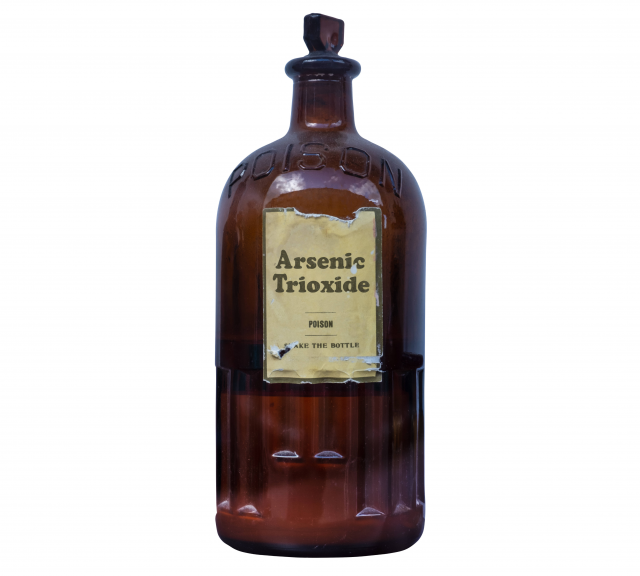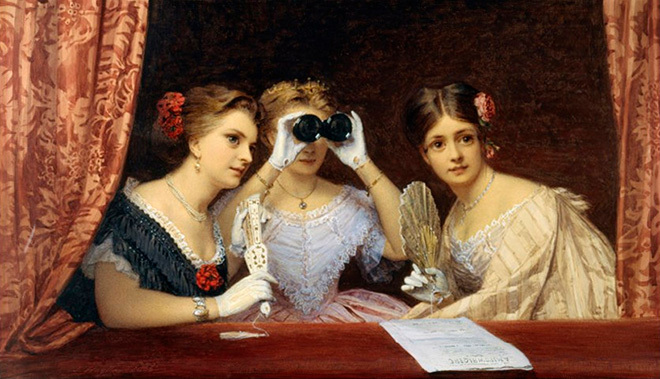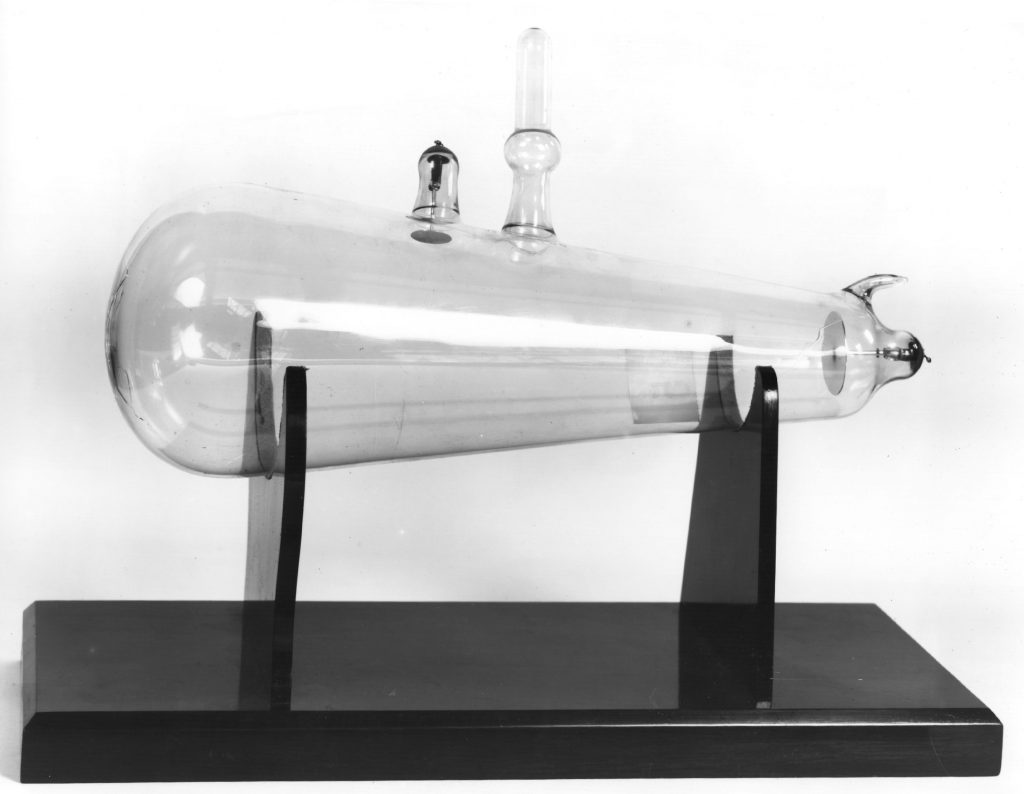Now, without a doubt, we go to the operating table to have liposuction, we go to the beautician every six months for botulinum toxin injections, and we regularly make appointments for laser hair removal. All this seems logical to us and does not raise any questions. So will our children think like this?
Every generation loves to look back at the follies of the past and be horrified by the methods our ancestors used to get glowing skin or lose weight. But we have a lot to learn from our ancestors. First of all, you shouldn’t always trust marketers.
Elizabeth, I inspired a whole generation of women to apply lead to their faces, and X-ray radiation became not only a great discovery in science, but also the most terrible method in the entire history of hair removal.
Lead and arsenic for smooth and snow-white skin
For centuries, pale skin was considered a sign of aristocracy and was therefore the object of desire for many girls. At different times, whiteness was achieved in different ways. And one of the most notorious is lead. It is believed that the ancient Greeks and Romans began to use it. They mixed white lead and mercury and applied this “miracle” medicine to their faces. Heavy metals seeped into the skin and slowly poisoned it.

This trend was soon abandoned until an even worse alternative came into fashion. Women applied a substance called Ceruse to whiten their skin. A recipe from 1688 describes this cosmetic product as a mixture of water, vinegar and lead. It is believed that even Queen Elizabeth I of England used it. This mixture allowed lead to penetrate the skin much more than others. As a result, poisoning occurred even more often, hair fell out, and prolonged use of such a product could lead to death.
As soon as the lead disappeared, arsenic took its place. This highly toxic chemical destroys red blood cells (red blood cells) and causes the skin to become pale.


At that time, even ready-made products containing arsenic appeared on the market. Moreover, they were sold as approved by doctors; For example, Dr. Mackenzie’s arsenic soap or Dr. Campbell’s wafers with arsenic (intended for human consumption). Both products are designed for facial skin and promise to make skin smooth and radiant. In fact, this soap can cause you to go bald and eventually die. Meanwhile, they began to recommend taking the same poison orally to heal the skin.
Products containing arsenic persisted until the 1920s.
Tapeworm Diet for Thin Waist

At the dawn of diets, girls resorted to truly extreme methods of losing weight. For example, in the Victorian era, those who wanted to have a slim waist swallowed tapeworm eggs. The essence of the diet is that the parasite hatches in the intestines, settles there and consumes the calories intended for the person. True, tapeworms do not care about making their “owners” comfortable while losing weight, so they can choose other internal organs for their food, thereby causing irreparable harm to health.
Tapeworms can reach up to 8-10 meters in length, but they can remain undetected for a long time. Their presence in the body can lead to serious diseases such as meningitis or epilepsy.
And yes, if it seems to you that girls can no longer afford such a diet, this is not so. A few years ago, Khloe Kardashian admitted that she once researched how to buy tapeworm eggs. She later said that she was ready to do anything to lose weight, even introducing a parasite into her body.
Bottomless eyes from belladonna drops
And again the Victorian era… For a deeper, charming look, the girls used a trick – they dripped belladonna vaccine into their eyes.

Translated from Italian, belladonna means “beautiful lady”. This solution dilated the pupils, making the eyes large, bright and, as they say, bottomless.
There was just one problem: It was based on nightshade, a deadly, poisonous plant that can cause blindness in large doses. Belladonna contains the active chemical atropine, which is used today by optometrists in regulated doses to dilate pupils during eye exams. However, dosages were not monitored in the Victorian era.
Voluminous wigs that attract rodents
The heyday of wig fashion began in the 16th and 17th centuries, thanks to the infamous English Queen Elizabeth I. After suffering from smallpox, she lost almost all of her hair. She came to the rescue with a wig.

This trend was immediately adopted by the courtiers and later spread throughout Europe. The bigger and more showy the wig, the better. Sometimes its height can reach several tens of centimeters. For this purpose, a wooden frame was usually made and the sheet metal was glued to it.

There were no styling products back then, so a mixture of beef fat and bear fat was used. With its help, the wires were fixed. This styling took a lot of time, so the girls did not take off their wigs for several days or even weeks. There was only one problem (other than hygiene, of course) – the aroma of lard and oil attracted rats and mice. So it got to the point where the cage was invented so that women could sleep without mice gnawing on their hair in the middle of the night.
Hair removal with x-rays
Unwanted body hair is not just a problem for modern girls. Therefore, a permanent method of removing body hair has always been sought. In 1895, Wilhelm Conrad Roentgen discovered x-rays by chance while studying light in Germany. Medical researchers are investigating the possibility of using these electromagnetic waves to diagnose and treat various diseases. Just a year after the discovery, Leopold Freund began his research on the effects of X-rays on hair. The scientist discovered that when X-rays are applied to an area, hair falls out. So, in the early 1900s, many women rushed to try this method of hair removal on themselves. It was marketed as fast, effective, harmless and painless.

The effects of X-rays on the human body have not yet been fully investigated. Therefore, until the mid-twentieth century, women had almost no idea about the risks they were exposed to. Irradiation sessions lasted four minutes; The area where the hair needed to be removed was treated directly. The course of such procedures lasted several months, and sessions had to be repeated weekly.
This method actually destroyed the hair forever, or at least for a very long time. But this was followed by serious consequences, such as premature aging of the skin, the appearance of white or brown fibrous formations, cancerous tumors and radiation sickness. At that time, a large number of deaths from radiation overdose were recorded, and this method is still considered one of the worst in the history of hair removal.
Source: People Talk
I’m Roger Gritton, and I’ve been writing for the The Fashion Vibes for over 5 years now. My specialty is beauty news; I’m passionate about covering the latest trends, products, and innovations in the industry. In my time there, I’ve become known as an authority on all things beauty-related.
I love discovering new experts to interview, researching up-and-coming ingredients and techniques that are making their way onto our beauty shelves and highlighting people who are making a difference in the world of cosmetics. My work has appeared not only on The Fashion Vibes, but also several other publications including the New York Times Magazine, Allure Magazine and Refinery29.





